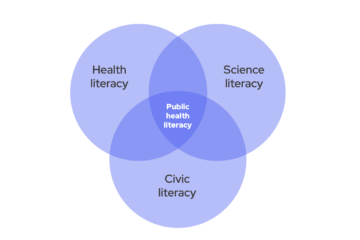
Catherine Ettman, PhD, CLIMB researcher and a postdoctoral fellow in mental health at the Johns Hopkins Bloomberg School of Public Health, answered our questions on the state of mental health in the U.S. and what needs to happen.
What is this project about and why is it important?
The CLIMB study is a nationally representative, longitudinal study that measures mental health, stressors, and financial assets in U.S. adults. Launched in March 2020, the CLIMB study aimed to document trends in mental health due to the COVID-19 pandemic. The study follows a cohort of U.S. adults, checking in each spring, to understand how mental health is evolving and what factors protect mental health.
As a leading cause of disability worldwide, poor mental health is widespread and costly, and its effects can last throughout the life course. The CLIMB study aims to understand what matters most for mental health and how we can create the healthiest population possible.
What is the state of adult mental health in the U.S.? And what are the biggest challenges?
Depression and anxiety are common in the U.S., with more than one in four U.S. adults reporting elevated symptoms of poor mental health. Mental health is sensitive to the social, physical, and economic environment—and stressors such as job loss, difficulties paying for rent, and relationship problems can worsen it. We have found that people with fewer assets—such as lower income or savings—experience more stressors and report disproportionately worse mental health than people with more assets. Systemic challenges in the U.S. include the inequities that underlie poor mental health, screening and diagnosing poor mental health, and access to adequate, accessible, and affordable treatment.
We have seen a lot of news lately about the decline of youth mental health during COVID-19. How does this compare with what you’ve seen in adults?
In the CLIMB study, we found that younger adults report higher rates of probable depression and anxiety than older adults. Through this study and other work, we have found that COVID-19 led to worse mental health outcomes for all groups, but that younger groups reported a greater burden during the pandemic.
Like many Americans, the public health workforce experienced mental health challenges during the pandemic. How does mental health fit into public health?
Mental health is public health. The mind is connected to the body, so understanding and addressing mental health is a critical part of maintaining the health of individuals and populations. The public health workforce experienced mental health challenges during the COVID-19 pandemic, and upcoming research suggests that they may have experienced these at a higher rate than the general population.
What are your top three top takeaways from this work?
- Depression and anxiety symptoms were at high levels during the COVID-19 pandemic.
- People with fewer resources—such as lower income or lower savings—and more stressors—such as job loss or difficulty paying for rent—experienced a disproportionate burden of poor mental health.
- There are steps society can take to improve population mental health, such as ensuring that people have access to basic needs, assets, social support, and treatment.
What will you hope this will lead to?
I hope that this work will elevate the importance of mental health in the public health conversation. I also hope to raise awareness for the contextual factors that shape mental health, towards a more equitable world where all people can live healthy, happy lives.
As the CLIMB study continues, be on the lookout for new data and resources as they are released.





